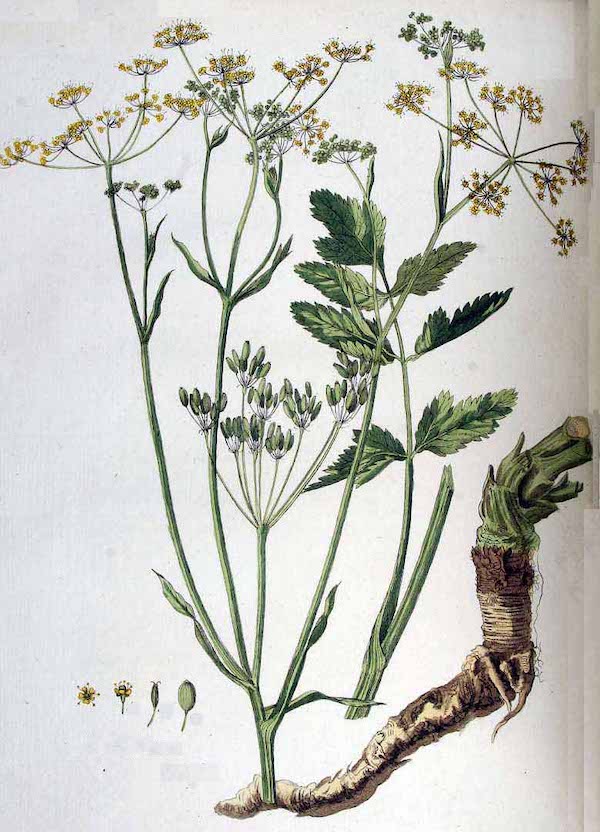Plant of the Month: February 2023
|
| Parsnip |
Pastinaca sativa L.
|
UMBELLIFERÆ (APIACEÆ); Carrot Family
|
| After potatoes, parsnips are the best root-crop calorie source suitable for Seattle‘s climate. Though often deemed carrot's country cousin, devoid of lovely orange or purple color, parsnips offer advantages over carrots. First, per ounce, they supply more food --less water. Second, they require less sunshine to thrive. Third, they offer a longer season, being more cold-tolerant. Fourth, though both carrot greens and parsnip greens are edible, parsnip greens are more substantial. |
| The common Parsnip is native from Spain to Mongolia, but is now wild all over the temperate world in appropriate climates. There are 14 additional Pastinaca species, but they are not cultivated. |
| Unlike carrots, parsnips are eaten cooked. Roasted, sauteed, boiled —your choice. I prefer slicing them thin and stir-frying them in oil and butter. Like onions, parsnips can not be overcooked. |
Here is how carrots and parsnip compare in caloric nutrition:
|
| 156 grams carrot are 87% water; 70 calories; 2 g. protein |
156 grams parsnip are 78% water; 125 calories; 2 g. protein
|
| So if you are limiting your caloric intake to lose weight, carrots are better. But with increasing global food scarcity, getting enough calories will become vital in our future. |
| Parsnips are grown easily but need loose, deep soil to make long roots. They favor alkaline soil, so in Seattle you should work lime into your planting soil. In the wild, parsnips often sprout in fall, overwinter, and then next summer send up a flowerstalk, go to seed and die. In this respect parsnips are like carrots, celery, angelica and dill. They can sprout, flower, and die in one year, or can take three years. But mostly they take two years, so are called biennials. |
| The longest parsnip recorded was 21.5 feet long, grown in the UK in 2017. What a hassle it must have been! The heaviest recorded was 17 pounds, 5 ounces. Almost all sold at Seattle markets weigh less than 2 pounds. |
| Here is a list of 13 parsnip cultivars whose seeds you can find for sale these days: Albion, All-American, Gladiator, Halblange, Harris Model, Hollow Crown, Lancer, Kral Russian, Student, Tender and True, Turga, Warrior, White Spear. A British firm, Kingsseeds.com, offers ten kinds. |
I have raised more than one over the years, and this year will sow a beet-root shaped cultivar called Kral Russian.
|
| Here and there in and near Seattle, parsnips are found feral, weedy or wild. In most such conditions their roots will be relatively scrawny rather than plump, unless they are on a compost heap or the like. |
| If you get skin contact with above-ground parts of parsnip especially the immature seeds in summer sun, furanocoumarins may cause photosensitization, contact dermatitis and skin lesions. But similar risks are not rare in a wide variety of common plants. The plants make these chemicals to discourage insects from eating them. Some furanocoumarins are medicinal for people. Wild parsnips tend to have more furanocoumarins than cultivated parsnips. Wear long sleeves and gloves if you care to be cautious. |
The drawing below showing the flowers and seeds is from Dutch botanist Jan Kops' Flora Batava (1828).
Back |

parsnip root ready to slice for dinner ; photo by ALJ
|

a wild parsnip in mid-May ; photo by ALJ
|

dinner of parsnips, broccoli, salmon, caraway seeds, salt, cooked in oil ; photo by by ALJ
|

parsnip drawing from Flora Batava (1828)
|
|
|

